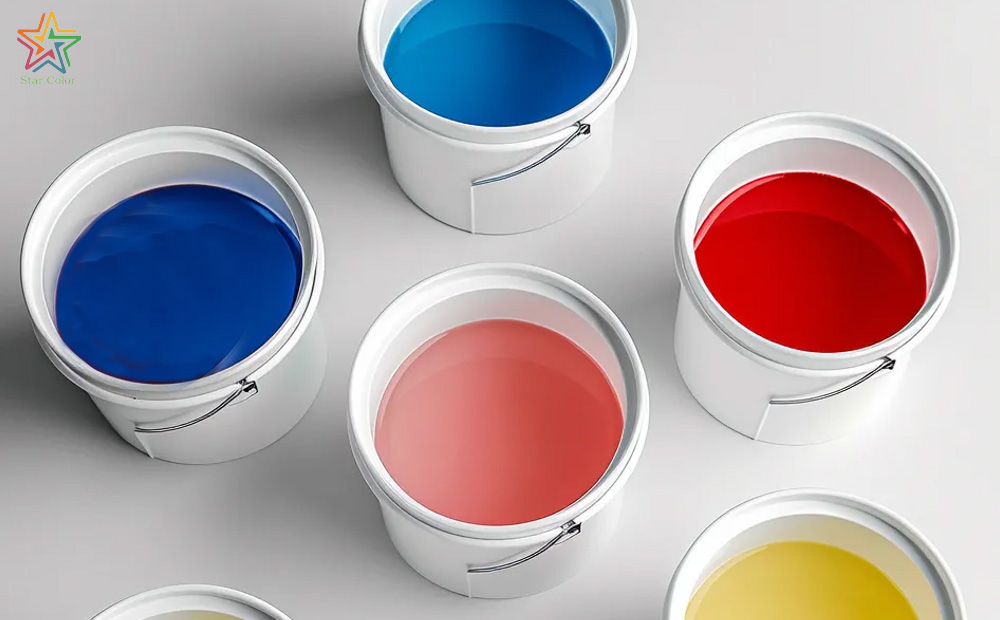Printing on non-porous surfaces such as plastics, metals, films, and glass presents unique challenges. These materials lack the absorbency of porous substrates like paper or cardboard, making it difficult for UV flexo inks to adhere effectively. Poor adhesion can result in smudging, peeling, or fading, which compromises the quality and durability of the print.

Challenges of Printing on Non-Porous Surfaces
Non-porous substrates are often used in industries like food packaging, electronics, and industrial labeling because of their durability and resistance to moisture or chemicals. However, their smooth and impermeable nature poses several challenges:
Low Surface Energy: Many non-porous materials have a surface energy that is too low to allow ink to bond effectively.
Resistance to Liquids: Substrates like polyethylene (PE) or polypropylene (PP) repel liquids, making it difficult for inks to spread and adhere.
Potential for Abrasion: Prints on these surfaces are more prone to scratching or peeling during handling.
Techniques to Improve Adhesion of UV Flexo Inks
1. Surface Pretreatments
Surface treatments modify the substrate’s surface energy, making it more receptive to UV flexo inks. Common pretreatment methods include:
Corona Treatment:
How It Works: Corona treatment uses high-voltage electric discharge to increase the surface energy of materials like plastics.
Benefits: Improves ink wetting and adhesion by creating a polar surface.
Applications: Effective for films like PE, PP, and polyester.
Flame Treatment:
How It Works: Exposes the substrate to a controlled flame to oxidize the surface, increasing its energy.
Benefits: Suitable for larger surfaces and high-speed production lines.
Applications: Often used for plastic containers and labels.
Plasma Treatment:
How It Works: Utilizes ionized gas to clean and activate the substrate surface.
Benefits: Effective for high-performance and delicate materials, including electronics.
Applications: Preferred for high-tech applications requiring precision.
Chemical Priming:
How It Works: Applies a chemical primer or adhesion promoter to the substrate.
Benefits: Forms a bridge between the ink and the surface, enhancing bond strength.
Applications: Ideal for specialty substrates like metals or glass.

2. Using Adhesion-Enhanced UV Flexo Inks
Manufacturers offer UV flexo inks specifically formulated for non-porous surfaces. These inks include adhesion promoters or resins that bond better to smooth substrates.
Key Features:
Enhanced wetting properties.
Improved bonding agents for specific substrates.
Selection Tips:
Choose inks designed for the specific material, such as PET, PVC, or aluminum.
Consult with ink suppliers to ensure compatibility with your substrate and curing system.
3. Optimizing Curing Conditions
Proper curing is critical to achieving optimal adhesion on non-porous surfaces. Inadequate curing can lead to incomplete bonding, while over-curing may cause brittleness.
UV Lamp Intensity:
Ensure sufficient UV intensity for complete ink curing.
Match the lamp power and exposure time to the ink's curing profile.
Curing Speed:
Adjust press speeds to ensure the ink receives adequate exposure to UV light.
Post-Curing Considerations:
Some inks may benefit from post-curing for additional strength.
4. Environmental Control
Non-porous surfaces can be sensitive to environmental factors during printing:
Cleanliness:
Dust, grease, or moisture can interfere with adhesion. Ensure the substrate is clean and dry before printing.
Use cleaning agents like isopropyl alcohol to remove contaminants.
Static Electricity:
Static charges can repel ink droplets and affect print consistency.
Use anti-static devices to neutralize charges on the substrate.
5. Ink Application Techniques
Fine-tuning the ink application process can also enhance adhesion:
Proper Anilox Roller Selection:
Use anilox rollers with a cell volume and line count suitable for the substrate and ink type.
Avoid applying too much or too little ink, as this can affect adhesion.
Ink Film Thickness:
Maintain a consistent and sufficient ink film thickness to promote better bonding.
Press Settings:
Ensure proper press pressure and alignment to avoid disruptions in ink transfer.

Testing and Quality Assurance
To ensure reliable adhesion, incorporate testing and quality control measures into your production process:
Tape Test: Use adhesive tape to check whether the ink adheres properly to the surface.
Abrasion Test: Simulate handling conditions to assess the durability of the print.
Chemical Resistance Test: Evaluate the ink’s ability to withstand exposure to water, solvents, or cleaning agents.
Sustainability Considerations
As industries move toward eco-friendly practices, consider how adhesion solutions align with sustainability goals:
Use low-VOC or VOC-free primers and cleaners.
Select inks compatible with recyclable or biodegradable non-porous substrates.
Optimize production processes to minimize waste and energy consumption.
Printing on non-porous surfaces with UV flexo inks requires attention to substrate preparation, ink selection, and curing conditions. By employing surface treatments like corona or flame treatment, using specially formulated inks, and fine-tuning press settings, you can achieve excellent adhesion and durable prints.